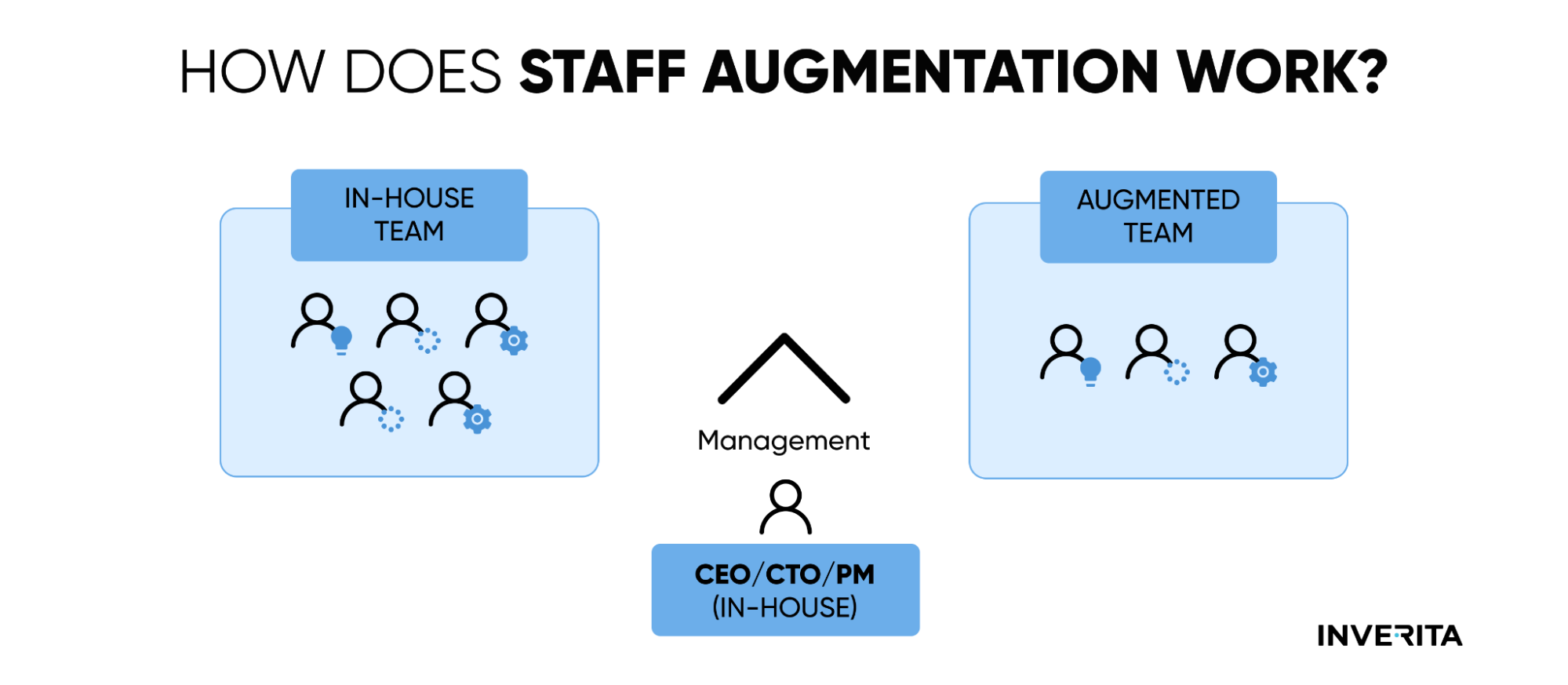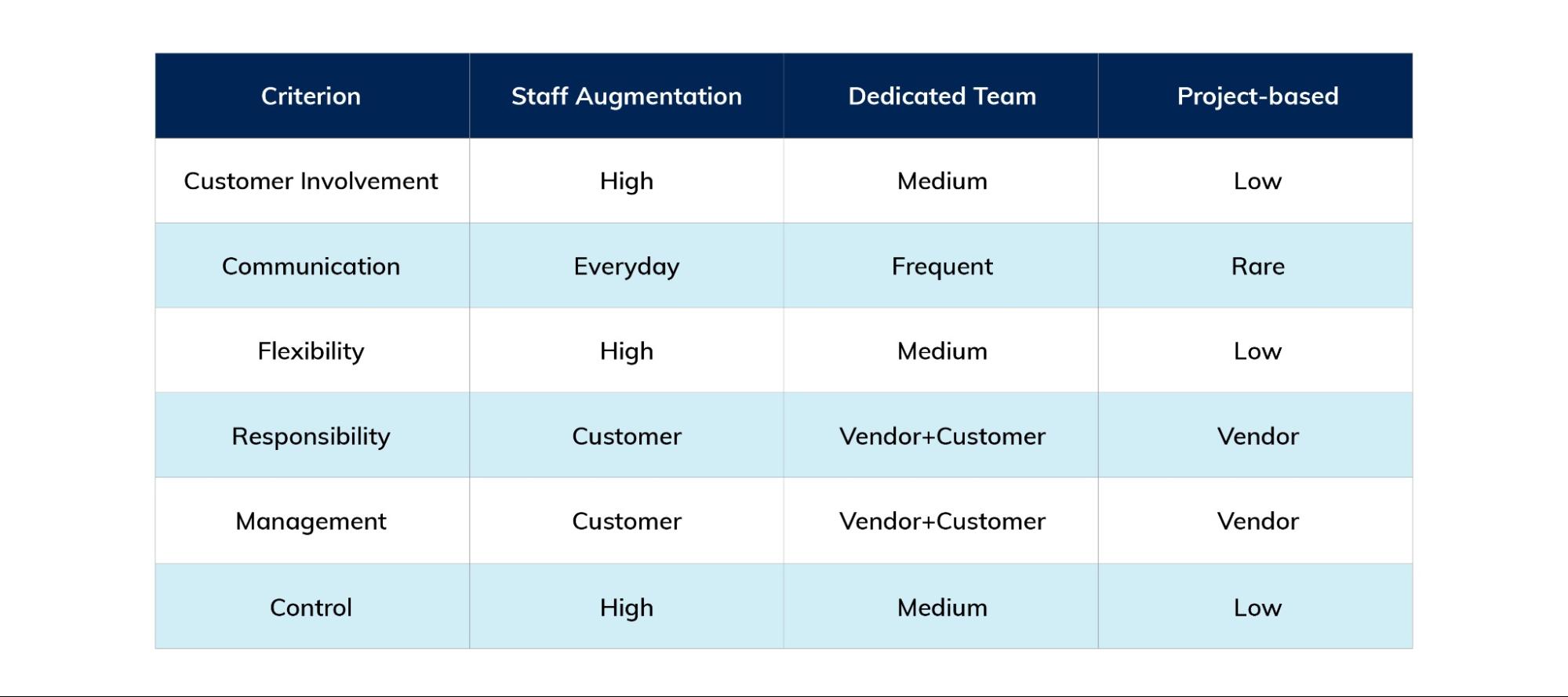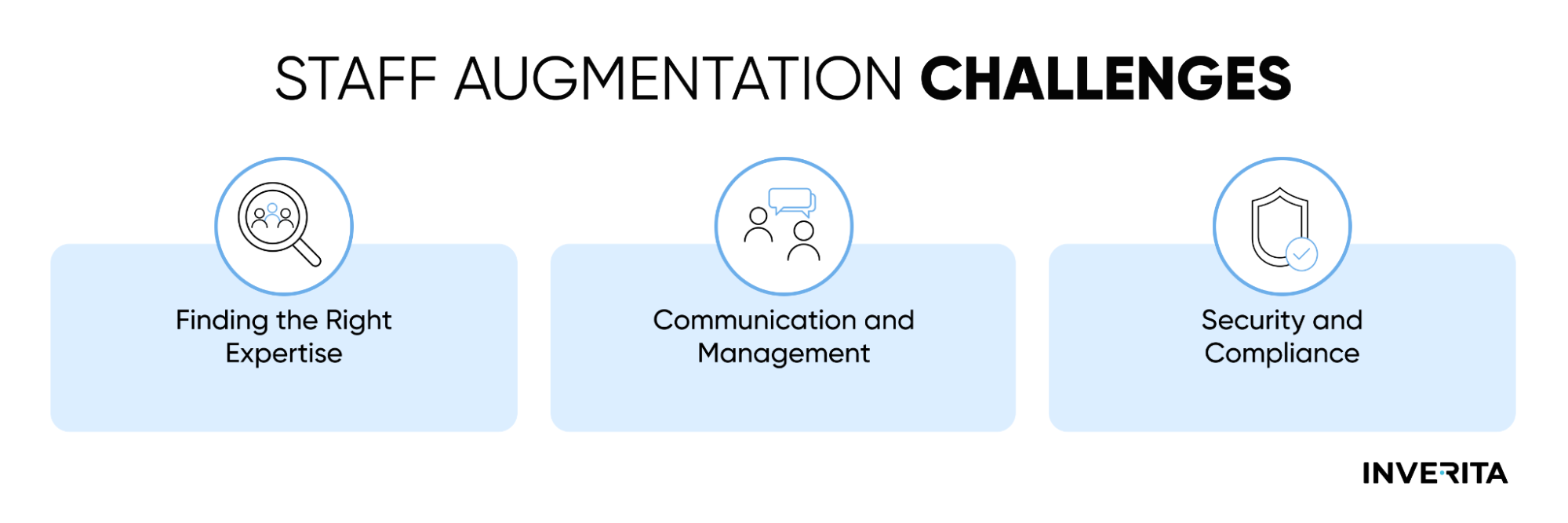Finding the Right Expertise
The IT industry is characterized by intense competition and the scarcity of in-demand tech skills. According to the report by the Bureau of Labor Statistics, the rate of software developer shortage is predicted to increase to almost 1,2 million open job positions. As a result, companies may be forced to search beyond their local areas to hire the talent they need. A good solution might be a partnership with an IT staffing agency. Such agencies have an extensive network of qualified candidates, enabling them to effectively match the specific needs of businesses with suitable tech talent.
Communication and Management
It also might be challenging to manage the communication and relationship between the augmented team of developers and permanent staff. Introducing new members to the team can disrupt established work dynamics and potentially create friction if integration is not handled effectively. This can result in communication breakdowns, a lack of trust, and other issues that have a bad impact on overall team productivity.
A solution lies in establishing transparent communication channels between the teams. Regular meetings can facilitate open dialogue, while team-building activities foster a sense of cohesion. Clearly defining roles and responsibilities for all team members is crucial to avoid misunderstandings. Additionally, providing training and support for augmented staff helps familiarize them with the company's culture and expectations, promoting smooth integration and collaboration.
Security and Compliance
Managing security risks becomes challenging when dealing with remote developers or contractors, as they may not have the same level of access to sensitive data and systems as full-time employees. This disparity can potentially lead to security breaches and compliance violations, which not only harm a company's reputation but also expose them to legal and financial penalties.
One effective solution is to establish stringent security protocols and implement comprehensive background checks for augmented staff. This involves verifying their qualifications, experience, and references to ensure their reliability and trustworthiness. Additionally, conducting security clearance checks can provide an added layer of assurance.
The Three Types of Staff Augmentation
Staff augmentation can be classified into three primary types:
Basic
Basic staff augmentation primarily addresses urgent staffing needs and fills positions that do not demand highly specialized talent. It typically involves roles related to manual labor, factory work, or retail, where specific skills beyond basic qualifications may not be critical. This type of staff augmentation focuses on quickly filling positions to meet immediate operational requirements.
Skill-Based
Skill-based staff augmentation entails hiring talent with specific skills that are necessary for a particular role but do not require an exceptional level of expertise. Examples of skill-based staff augmentation include basic copywriting, typing, data entry, or administrative support roles.
Highly-Skilled
Highly-skilled staff augmentation involves recruiting individuals with advanced expertise and specialized skills, particularly in professions like software development and IT. In this type of staff augmentation, the level of skill is critical for successful project execution or the fulfillment of complex tasks.
When Is It Best to Use an IT Staff Augmentation Model?
The popularity of IT staff augmentation services is tremendous. However, before you join all those successful companies benefiting from cooperation with a software outsourcing partner, identify if your case is really the case when it’s best to use IT team augmentation.
First, if you have an in-house team but want to extend it.
One of the amazing benefits of the staff augmentation model is that it allows reducing costs. Whenever you feel that it’s time to build another software engineers’ department or scale the team you already have — hiring an outsourcing vendor is a great option. You don’t have to provide office space, pay for insurance or other perks, and promise sky-high salaries. With the staff augmentation model, many of those things get eliminated.
Second, if you need experts with certain technical expertise.
There are multiple software development companies all over the world, can you imagine how huge is the worldwide talent pool? If you need a developer specializing in certain technology, you’ll definitely find one.
Third, you need flexibility.
With an internal team approach, it’s impossible to hire an engineer for one task or one day, whereas with a staff augmentation model you can easily change members of your team according to the project requirements.
Fourth, there are no qualified developers in your local area
You may have both the desire and money to create a larger in-house team, however, you may struggle with hiring engineers skilled in specific programming languages. If it’s about you, then it’s best to find an outsourcing team or software team augmentation company that will fill the required talent gap.
What’s Your Next Step?
Hiring new people is not as easy as ABC. Especially, if your focus is on the best talent. It requires spending a big amount of time and money on recruiting and training. Furthermore, you are to cover all the ongoing expenses for the employees, including paying for downtime. Will you receive good retention in return? No one knows.
On the other hand, staff augmentation with inVerita guarantees you cooperation with talented and experienced developers with no extra expenses of your time and money. Drop us a line to start building your dedicated team with inVerita. 









_1764586939-small.webp)
